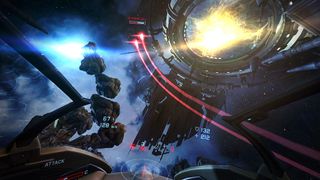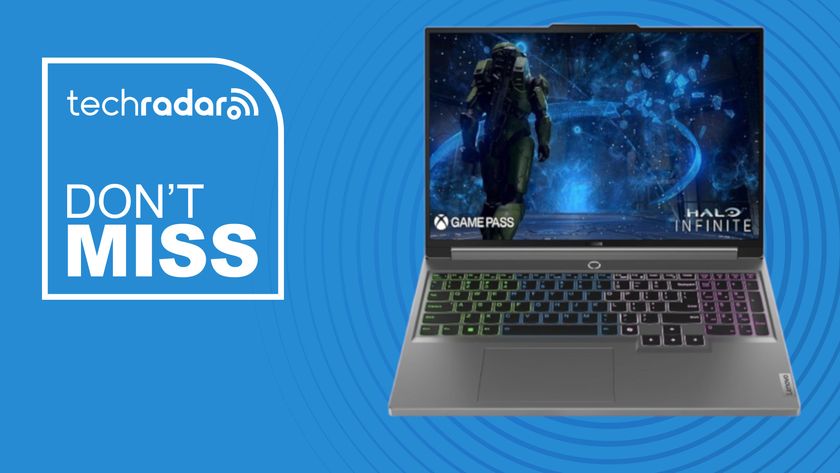Of course, talking about the difference in performance between a more powerful graphics card versus a processor is only half equation. The other part comes from testing, and it just so happens we recently reviewed the Origin EON15-X and MSI GS30 Shadow with GamingDock, pitting both machines through our battery of benchmark tests.
Here's how the Origin EON15-X performed in our suite of benchmark tests:
- 3DMark: Cloud Gate: 27,405; Sky Diver: 24,414; Fire Strike: 8,788
- Cinebench CPU: 874 points; Graphics: 158.01 fps,
- PCMark 8 (Home Test): 4,697 points
- Middle Earth: Shadow of Mordor (1080p, Ultra): 68.52 fps; (1080p, Low): 160.59 fps
- Metro: Last Light (1080p, Ultra): 36 fps; (1080p, Low): 138 fps
Here's how the MSI GS30 with Gaming Dock performed in our suite of benchmark tests:
- 3DMark: Cloud Gate: 23,603; Sky Diver: 25,435; Fire Strike: 11,285
- Cinebench CPU: 630 points; Graphics: 140.85 fps
- PCMark 8 (Home Test): 4,098 points
- Middle Earth Shadow of Mordor (1080p, Ultra): 93.70 fps; (1080p, Low): 208.48 fps
- Metro: Last Light (1080p, Ultra): 51.33 fps; (1080p, Low): 139 fps
There are a lot of numbers to digest here, but it should be abundantly clear both systems are on top of their game in different ways. Unsurprisingly, Origin's machine produced a higher PCMark 8 score of 4,697 points compared to the MSI GS30's 4,089 points. PCMark 8 is a synthetic benchmark test that checks the CPU's capabilities and efficiency by simulating a series of everyday tasks such as word processing, video calling and some light graphics rendering.
The difference between the two machines PCMark 8 scores aren't too distant, which shouldn't come as much of a surprise. Advances in processor technology haven't been dramatic over the course of the last few years. Of course, clock speeds have increased along with improved power efficiency, but generally even a modest CPU will last a few years, whereas new and much more powerful GPUs come out almost every year.

That said, the CPU plays a much more important role in computationally heavy games like Cities Skyline. Although Intel's Core i7 processors are reported to be just as fast as their desktop counterparts, the latest Razer Blade choked hard while trying to play the city building simulator on low settings at both 1080p and the machine's full 3,200 x 1,800 resolution. Meanwhile, even our modest desktop outfitted with Intel Core i5-4590 processor and a Nvidia GTX 670 graphics card.
The problem with laptop processors stems from the way they are designed for power efficiency with slower clock speeds. Desktop parts, on the other hand, can focus purely on performance since a PC tower will always be plugged into the wall.
Get daily insight, inspiration and deals in your inbox
Sign up for breaking news, reviews, opinion, top tech deals, and more.
Machines equipped with desktop processors, such as the EON15-X, also lend themselves to other calculation-intensive work in the media world. A fairly powerful CPU is extremely advantageous for video editing, 3D modeling or most other media creation tasks that require intense calculations.

When it comes to gaming though a beefier GPU will often be more advantageous than a high-end processor. This is especially evident looking at the results of our hardest gaming benchmark, Metro: Last Light. The desktop Nvidia GTX 980-aided MSI GS30 Shadow was able to play the game at a much higher 51.33 frames per second compared to the average 36fps the Origin EON15-X equipped with a Nvidia GTX 980M was able to maintain.
3DMark's Fire Strike test, a synthetic GPU benchmarking tool, shows just how much more powerful a desktop card is in comparison to it compact notebook equivalent with a nearly 3,000 point difference. In essence, this shows a more capable graphics card will allow you to play games at their highest settings with more enabled graphical flourishes and higher frame rates.
In our own testing we found we were able to play modern games such as Dragon Age Inquisition on Ultra at 60fps with the frame rate dropping down to 50 intermittently. However, the desktop Nvidia GTX 980 proved to be an even better performer keeping the game locked to a steady 60fps. Undoubtedly it could have gone even higher if we plugged the MSI GS30 into a monitor with a 120hz refresh rate, but at the time of testing the game was only able to run at a maximum of 60fps on a 60hz monitor.
It's commendable how far mobile components have come to match performance of their desktop equivalents, but like laptop processors, mobile graphics cards are anchored by power constraints. What's more, a full-size graphics card simply comes packing more CUDA cores, allowing it to render games and video with better quality and at a greater fidelity.
Current page: Crunching the numbers
Prev Page In pursuit of processing power Next Page Top of the heapKevin Lee was a former computing reporter at TechRadar. Kevin is now the SEO Updates Editor at IGN based in New York. He handles all of the best of tech buying guides while also dipping his hand in the entertainment and games evergreen content. Kevin has over eight years of experience in the tech and games publications with previous bylines at Polygon, PC World, and more. Outside of work, Kevin is major movie buff of cult and bad films. He also regularly plays flight & space sim and racing games. IRL he's a fan of archery, axe throwing, and board games.












